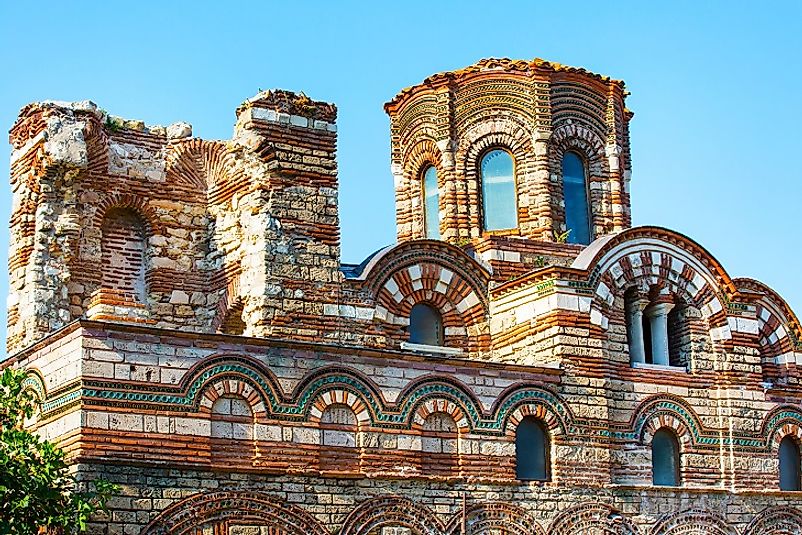UNESCO World Heritage Sites In Bulgaria

Bulgaria is home to nine UNESCO World Heritage sites. These include ancient cultural and burial sites, religious monuments, and nature preserves.
Cultural and Burial Sites
The ancient city of Nessebar is perched on a rocky peninsula overlooking the Black Sea. Originally a Thracian settlement, the city became a Greek colony in the 6th Century BC and served as a major Byzantine center during the Middle Ages. Nessebar contains preserved cultural evidence from 2,000 BC until the present time, including an acropolis, temple of Apollo, basilica and fortress, as well as 19th Century wooden houses. Erosion of the peninsula shoreline poses a threat to the integrity of this historic site.
Near the village of Madara, a majestic sculpture of a knight battling a lion is carved into a sheer cliff 100 meters in height. Alongside it are inscriptions describing events of the 8th and 9th Centuries. This relief is the only one of its kind, surviving in an authentic state. While the location and surrounding area are relatively protected, biological issues such as wind erosion and water run-off present challenges to future preservation.
Two Thracian tombs from the 3rd and 4th Centuries BC are also UNESCO World Heritage Sites. The Tomb of Kazanlak contains uniquely well-preserved murals depicting Thracian burial rites and culture. This site is extremely well-preserved and has been modified to accommodate the tourism industry without affecting its cultural and historical integrity. The Tomb of Sveshtari contains painted murals and figures carved in high relief on its walls.
Religious Monuments
Boyana Church is comprised of three separate historic buildings, built in the 10th, 13th and 19th Centuries, respectively. They are situated on the outskirts of Bulgaria's capital city. Interior walls are covered in many layers of frescoes dating back to the 11th Century. This site is well-protected and its future integrity is assured.
Rila Monastery is a monument to the 10th Century hermit Saint John of Rila. This monastic complex contains frescoes and architectural styles of the middle ages, Ottoman Empire and the Renaissance, from the 11th through 19th Centuries. Ongoing conservation projects promise to preserve this important cultural site for years to come.
Near the northeastern Bulgarian village of Ivanovo, a complex of 12th Century churches, chapels, monasteries, and cells are carved into a natural karst massif along the river valley. Complexes are extensive and contain exceptional 14th Century frescoes. Preservation efforts are ongoing, but the instability of the rock walls poses a significant threat.
Nature Preserves
Pirin National Park protects an alpine area of limestone mountains in southwestern Bulgaria. Its alpine meadows, glacial land-forms, alpine lakes and coniferous forests are home to a number of endemic and relic plant species from the Balkan Pleistocene Era.
The Srebarna Nature Reserve protects a freshwater lake and wetland ecosystem along the western banks of the Danube River. It provides nesting grounds for nearly one hundred bird species, many of them rare or threatened, and is a seasonal habitat for many avian species traveling along the Western Palearctic migratory bird routes.
UNESCO World Heritage Sites In Bulgaria
| UNESCO World Heritage Sites in Bulgaria | Year of Inscription |
| Ancient City of Nessebar | 1983 |
| Boyana Church | 1979 |
| Madara Rider | 1979 |
| Pirin National Park | 1983 |
| Rila Monastery | 1983 |
| Rock-Hewn Churches of Ivanovo | 1979 |
| Srebarna Nature Reserve | 1983 |
| Thracian Tomb of Kazanlak | 1979 |
| Thracian Tomb of Sveshtari | 1985 |







